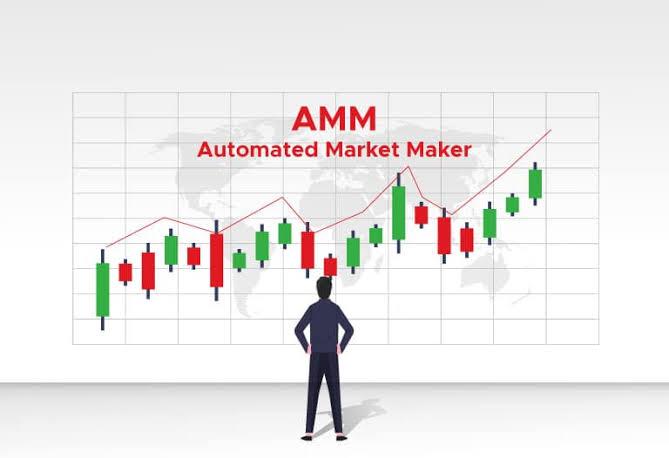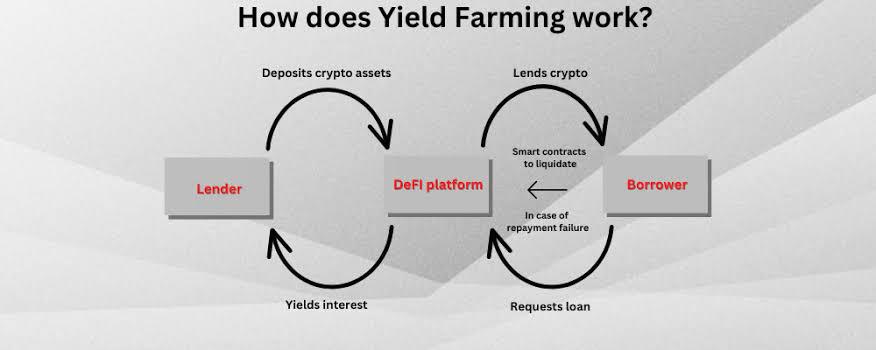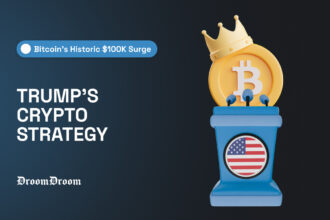Liquidity pool is a concept adopted in Decentralized Finance (DeFi) platforms, where buyers and sellers contribute to a liquidity pool. By doing so, crypto assets will always be available for financial operations.
A liquidity provider (LP) is also involved in a pool, often owning shares within the pool. One of the major functions of liquidity providers is to address market slippage and depth.
As much as a liquidity pool eliminates the need for financial intermediaries as we have in the traditional trading market, it also has its downsides, such as impermanent loss. In this article, you will discover how liquidity pools shape the crypto futures market. We will also talk about the liquidity pool downsides.
Key Concepts in Liquidity Pool
Two major concepts of liquidity pool are Automated Market Makers (AMM) and Liquidity Providers (LPS).
Liquidity Providers (LPS)
Liquidity Providers (LPS) deposit funds, typically crypto assets, into the liquidation pool. This action helps reduce price volatility and ensures a smooth transaction between buyers and sellers within the pool. More so, liquidity providers are rewarded based on the volume of shares they own within the pool. The reward can come as farming gifts, transaction fees, governance tokens, or any other reward.
Liquidity providers are at risk of impermanent loss due to market volatility. Impermanent loss is used when the price of the pool assets drops, affecting the liquidity provider’s token value. Thus, most liquidity providers would have earned higher by holding their assets instead of investing in a liquidity pool. However, as the name implies, an impermanent loss usually lasts for a short period.
Automated Market Makers (AMM)

Automated Market Makers (AMM) is an automated trading method that eradicates the need for traditional order books. This approach is employed in decentralized exchanges (DEXs) through smart contracts. They ensure transparency by using the constant product formula to determine the value of a crypto asset. However, the downside to this algorithm trading approach is its difficulty handling extreme market conditions since it lacks the human sense of judgment.
This article further explains the concept of Automated Market Makers in detail.
How Liquidity Pool Works
Pool formation is usually the first step of a liquidity pool, which is quite complex, as it involves writing smart contracts. Strategic planning must also be in place to ascertain a fair price among buyers and sellers. These plans are set in place to minimize slippage as much as possible.
Slippage is the difference between a trader’s price expectation on a trade and the executed price. This is because the price would have changed between when a trader places a trade and when it gets executed due to the market’s high volatility rate.
Yield Farming and Liquidity Pools
Trading platforms often incentivize prospective liquidity providers to have more people on board. Meanwhile, some providers increase their chances of getting extra liquidity tokens via liquidity mining. As a liquidity provider, always look for trading platforms that provide such opportunity.
Since many DeFi platforms may have incentive offers, liquidity providers also implement the yield farming strategy. Yield farming is a common approach in DeFi, where traders or investors diversify their portfolios for a higher return or profit, which also has a slightly higher risk.

Liquidity providers, or farmers in this case, will lock up or stake their crypto assets in different liquidity pools across several trading platforms. Some yield farming protocols may also centre around governance tokens, where a trader can participate in a project’s voting process. A common risk associated with yield farming is smart contract vulnerabilities, so crypto farmers must always bear this in mind before compounding their investment.
Importance of Liquidity Pool in Crypto Futures
The liquidity pool positively shapes the crypto futures market, ensuring efficient trading execution. Below are the other important aspects of the liquidity pool you should know.
Lowers Entry Barrier
Since the liquidity pool is permissionless, it does not limit who can participate in the crypto futures market. Also, people can join a liquidity pool without fear of market depth. Market depth is a situation whereby a system cannot handle large trading volumes without causing a significant change to the market price. However, with a liquidity pool, large trading volumes can be handled, increasing the number of users.
Increases Liquidity
Contributing assets to increase the amount of trading funds available enhance the futures market liquidity, promoting market stability. This is because the larger the trading funds, the lower the possibility of traders experiencing market slippage, which is a common risk, as discussed earlier. Also, since the market won’t rely on an order book, liquidity pool transactions will be faster and lower the cost.
Risk Management
The enhanced entry and exit advantage at the liquidity pool allows traders to implement risk management strategies more effortlessly. As discussed earlier, the ability to diversify funds will help traders adjust their portfolios accordingly. More importantly, traders will have more access to risk management tools, further boosting the derivative ecosystem.
This thread from Solus emphasized why companies must learn to prioritize liquidity as important risk management in trading.
3️⃣@binance leads by example in the crypto industry. Companies must learn from incidents like Terra's collapse and improve risk management to prioritize user protection, creating a safer and stronger environment. 🫣
— Solus (@SolusFinance) May 21, 2023Some Popular Liquidity Pool Protocols
Liquidity pool protocols are a set of smart contracts or rules concerning the liquidity pools ongoing in a decentralized platform. The protocols often enable users to participate in decentralized trading while offering rewards or incentives. Also, each of these liquidity pool protocols has its unique features. Below are some of the popular liquidity pool protocols you should know.
Uniswap
Uniswap is built on the Ethereum blockchain, allowing users to trade various Ethereum-based tokens. Uniswap is known for its outstanding contribution to the growth of the DeFi ecosystem – its unique product formula ensures a uniform quantity among two tokens. This, therefore, improves the efficiency of swapping Ethereum-based tokens.
Even though Uniswap is one of the leading protocols within the crypto space, Investopedia recorded that the company had a huge loss in 2023. It’s quite unfortunate that this incident led to a huge loss of $25 million.
PancakeSwap
The PancakeSwap is built on the Binance Smart Chain, providing liquidity for various tokens. The native token in this ecosystem is CAKE, which sometimes serves as an incentive to encourage user participation. This liquidity pool protocol is popularly known for its fast and low transaction fee.
Solus Finance

Solus Finance is a relatively new trading platform built on layer one blockchain, Shardeum, and has hit over 52k active users. The ecosystem mainnet token is $SOLUS, which is set to be released in 2024. The trading platform targets the GenZ generation, creating a web app to grow its community.
In a recent tweet, Solus reached one of its target audience communities, Seshadripuram College, enlightening the GenZ on futures trading and derivatives.
All Aboard Solus!
Solus visited the Seshadripuram College in Bengaluru and were stunned to see the turnout!
Discussing all about #Derivatives and #Futures, we're super proud and grateful to bring the GenZ to futures trading, together! pic.twitter.com/qD9DHHGVeK
— Solus (@SolusFinance) November 28, 2023
Regarding derivatives, the platform advocates for the on-chain execution of all actions. With very low gas fees, Solus will maintain a high level of decentralization and ensure fairness and transparency for its end-users by keeping all transactions on-chain.
Shardeum Foundation.
The Alpha version of Solus Futures is currently live, and the trading platform looks forward to releasing Solus Perpetuals soon. The Solus Perpetual is a non-expiry futures contract feature that will help traders retain their position for a long time.
Curve Finance
Curve Finance optimizes stablecoin trading, and it’s built on the Ethereum blockchain. Curve Finance is uniquely designed to meet the needs of traders who employ stablecoin and yield farming strategies. Thus, traders who want to transact at a low risk find the platform appealing.
Conclusion
Many investors and traders find liquidity pools attractive because the market movement is less volatile. Additionally, traders enjoy the feeling of trading at a lesser fee. Therefore, these associated benefits have helped crypto traders implement the right strategies for trading crypto futures as the market grows.



















